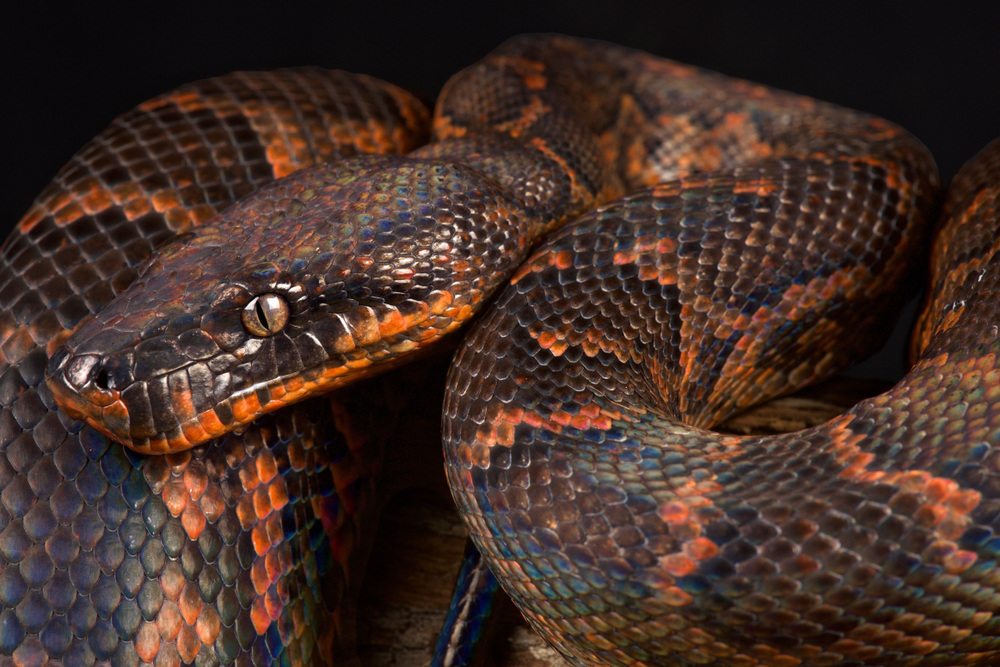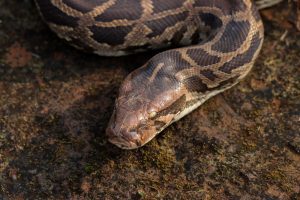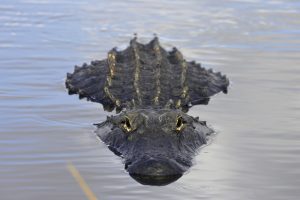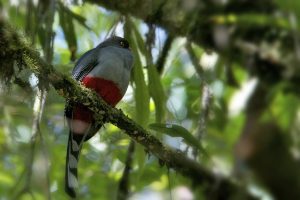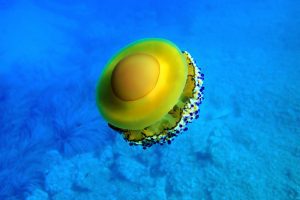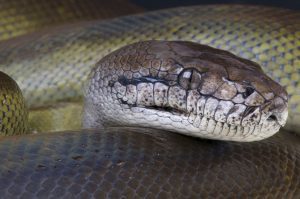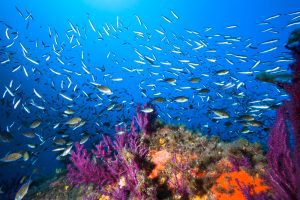Haiti is home to about 27 species of snakes. However, none of them are dangerous to people. Some do have mild venom that can kill small prey like lizards and frogs, but the venom is too weak to kill a person.
Haiti has a long tradition of snake charming and in religious rituals, although no venomous snakes are used – unlike the snakes used by charmers of India.
Snakes include the Hispaniola brown racer, the Hispaniolan lesser racer, the Haitian dwarf boa, and the Haitian pale-lipped blind snake.
Snakes, along with much of Haiti’s wildlife, are under threat of extinction due to habitat loss.
Table of Contents
Is there snake charming in Haiti?
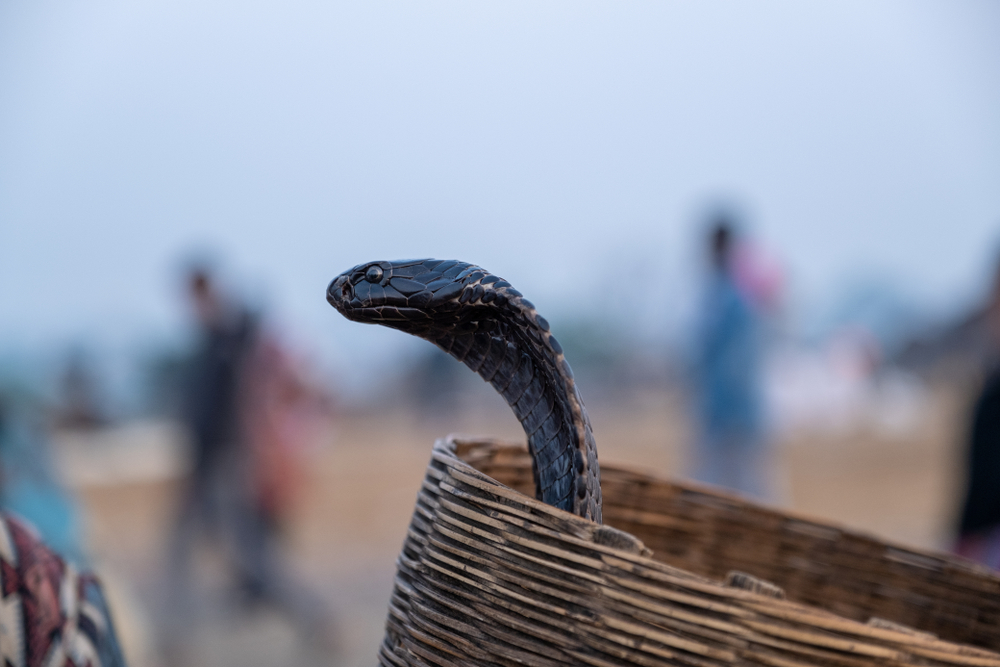
Unlike snake charming in India, no cobras or any other venomous snakes are used. Snake charming is a folk custom that is thought to bring health and luck to people who pay the snake charmer.
Snake charmers may also bring other animals with them to the streets of Haiti to show people for money. Sometimes, priests of the Voodoo religion use snakes in their rituals.
Snakes perform in various ways, sometimes by wrapping their bodies around the snake charmer’s head or by going partly into the snake charmer’s mouth.
The snake species that are mostly used by Haitian snake charmers are not native to Haiti.
They are large, friendly constrictors like ball pythons. Snake charmers wear colorful clothes and paint their bodies.
When a Haitian snake shows up in a snake charmer’s act, it is usually a Hispaniola brown racer.
What are the challenges for Haiti’s snakes?
All wildlife in Haiti is under threat of extinction because they just do not have enough room to live and find food. Haiti is such a poor country that people have torn down the forests in order to make homes and get firewood.
The Haitian National Trust estimates that only 10% of Haiti’s once lush forests remain.
Haiti has suffered from political upheavals and natural disasters like earthquakes and hurricanes. Stripping the land of forests may have helped people in the short term but has made them suffer in the long run.
Forests were once able to hold back a lot of water.
Now, the island is subject to terrible landslides. Programs run by the Haitian National Trust and international wildlife charities help to teach Haitians to value the forests and wildlife.
Hopefully, there will be Haitian snakes and other wildlife for all time.
Are there boas in Haiti?
Haiti is home to three boa species. Gracile boas, also called the Haitian tree boa (Epicrates stratus), have special scales and a slender body structure to help them climb trees.
They grow to just over nine feet, are nocturnal, and move very slowly, almost reluctantly, in daylight.
They prefer to live in trees and are brown or gray with patches of darker shades. They can be tamed once they are used to their owners.
When they are frightened, they emit a very foul-smelling musk.
Not much is known about the Haitian desert boa or Ford’s boa (Epicrates fordii or Chilaborthus fordii) except that they are also a dwarf boa species.
They only grow to 30 inches long or six inches longer than the Haitian dwarf boa. They can also be found in the Dominican Republic and surrounding islands.
They are pale green or tan with dark markings that vary in shape from ovals to wavy lines. Like other boas, they kill their prey by wrapping their bodies around it and squeezing.
The other type of boa, the Haitian dwarf boa, we’ll go into detail about below.
The five most common snake types in Haiti

Haitian Dwarf Boa
This is one of the few species in Haiti that is not under threat of extinction. Although it is getting harder to find in the wild in Haiti, the Haitian dwarf boa (Tropidophus haetianus) also lives in the Dominican Republic.
However, it mostly lives in private homes around the world since it is popular as a pet. It’s friendly and is easier to care for than most constrictors.
Haitian dwarf boas only grow to about two feet long, meaning they won’t outgrow their enclosures, unlike many other pet constrictor species.
They come in shades of dirty brown with dark green spots. In the wild, they mostly eat frogs and lizards, but as pets, Haitian dwarf boas eat mice.
They sleep during the day and are most active at night. With luck, Haitian boas as pets can live for ten years. Haitian dwarf boas are very good swimmers.
Hispianolan Lesser Racer
This species, Antillophis parvifrons, has a subspecies called Antillophis parvifrons alleni that also lives in Haiti.
It acts a lot like its larger cousin, the Hispaniola brown racer, but this snake has black or dark brown and yellow stripes with a pale underbelly.
These racing stripes are appropriate for such a fast snake. These snakes are called “racers” because they are so speedy.
This snake is not aggressive to people. Unlike many other snake species, they prefer to live in small groups of three to five but can live alone. They eat frogs, lizards, and mice.
Haitian Pale-Lipped Blind Snake
This is also called Richmond’s worm-snake, Haitian worm-snake, the Port-au-Prince blind snake, or Typhlops capitulatus. This is a small snake just over eight inches long that resembles a worm more than a snake.
It is brown on top and light brown with white on the bottom. Since it prefers to live in areas with vegetation, it is rarely seen in Haiti.
Unfortunately, not much is known about this unusual snake species. As its name suggests, it is blind, even though they have very small eyes.
They give live birth rather than lay eggs. The female forms eggs with incredibly thin shells inside of her body. There the babies hatch, and then she gives birth to the young.
Haitian Border Thread Snake
Thread snakes are similar in appearance to blind snakes. This species, Mitophis leptipileptus, is almost extinct (or may already be extinct) in the wild.
It’s extremely thin, even for a snake, and silvery in color, sometimes with shades of red and a white stripe and very small eyes. It grows to just under seven inches long.
Its last known range was a small area of La Salle Massif. It lives under the ground in burrows. The last time one was observed in the wild it was found was living under mango trees at a rest stop.
Unfortunately, nothing else is known about this snake.
There is no international conservation program in place to protect it, just the Haitian National Trust working to conserve its much-needed habitat.
Are there other snakes in Haiti?
Because Haiti is a poor country with bad infrastructure, there has not been a recent study of what snake species still remain, or what the needs of those snakes are so that they can be protected.
Some snakes, like the Hispaniolan W-headed racer, live in various zoos around the world.
Other species are common in the Dominican Republic, like the Hispaniolan lesser racer. Here is a list of some other snake species in Haiti:
- Thomas’ slender blind snake or Barahona thread snake (Mytophis pyrites)
- Tiburon hog-nosed racer (Hypsirhynchus sclaris)
- Hispaniolan lesser racer (H. parvifrons)
- Hispaniola olive racers (H. melanichnus)
- Hispaniola hog-nosed racer (H. ferox)
- Tiburon banded racer (Ialtris parishi)
- Hispaniola montane racerlet (I. haetianus)
- Hispaniolan W-headed racer (I. dorsalis)
- Greater sharp-nosed tree snake (Uromacer oxyrhyncus)
- Lesser sharp-nosed tree snake (U. frenatus)
- Blunt-headed tree snake (U. catesbyi).

